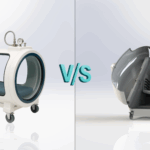Women are three times more likely to get migraines than men. There is a lot still to learn about migraines and why we get them, but in this blog I will give you the main signs of a migraine as well as a description of the 4 stages of a migraine (InfoGraphic below).
Symptoms may vary from person to person, but a migraine is a pulsing and disabling headache. Migraines can impair movement and vision and reduce good decision making. The best thing to do when having a migraine is to go home, close the curtains, reduce noise inside the house and get some sleep.
Here are a few basic signs of a migraine:
- Aura – Auras are visual spots, lines or flickering lights you see. They are usually dark patches, similar to those you get after looking into a light.
- Depression – Some migraine sufferers can have severe mood changes and can become depressed for no reason.
- Lack of restful sleep – Migraine sufferers usually struggle with falling asleep and they generally wake up tired.
- Sinus problems – Some migraine sufferers usually struggle with a stuffy nose or watery eyes.
- Cravings – It is very common that you might crave a certain food before a migraine. The most common food is chocolate.
- Frequent headaches – Most migraine sufferers complain of a throbbing pain on one or both sides of their head. These headaches can occur daily without developing into a full migraine.
- Pain behind the eye – Migraine pains usually borrow behind the eye. If you suffer from pain behind your eye, don’t think its only eye strain or an eye problem. Also see your GP about migraine.
- Neck pain – Most migraine sufferers complain of neck pain before or after a migraine. The neck usually becomes stiff and will have a throbbing pain.
- Frequent urination – This can be the symptom of many things. Frequent urination is experienced by most migraine sufferers. Some can get it days before and others only a few hours before a migraine.
- Yawning – Frequent yawning before a headache is very common among migraine sufferers.
- Numbness & tingling – Some people experience sensory aura before a migraine. This can include numbness & tingling in the fingertips, arms and face. This usually only happens on one side of the body.
- Vomiting & Nausea – 73% of migraine sufferers experience nausea and 29% experiences vomiting. A recent study at the National Headache Foundation found that migraine sufferers who experience vomiting or severe nausea experience more pain that migraine sufferers who experience little to no nausea.
- External triggers – Light, noise and smells can trigger a migraine. Usually if you are already experiencing a migraine al the above can worsen the pain.
- Trouble speaking – If you experience trouble speaking or getting the right words out, it can be a sign of an oncoming migraine. Usually people who are already experiencing a migraine, find it difficult to speak or communicate.
- Weakness in your arms – This usually happens only on one side of the body. This sign can also be the cause of numerous other things, always visit your GP if your experience frequent symptoms like these.
- Vertigo of double vision – Some migraines can cause dizziness, double vision or even loss of vision. If you suffer from these symptoms, it is best to have a colleague or family member drive you home.
- Headache hangover – After experience a migraine you will most likely feel like you’ve been hit by a truck. Your body can take a few days to recover. You may also experience fatigue, trouble concentrating, dizziness, weakness, loss of energy and lightheadedness after a migraine.
All who have suffered from a migraine, cringe at all the above mentioned signs. We all know what they feel like and the shock that sets in the moment you realise a migraine is at your doorstep.
The best ways to reduce your chances of getting a migraine is to improve your lifestyle. Eating the right foods, getting enough exercise and know your triggers are the most important things. Ozone Therapy can help fight migraines. Ozone Therapy can neutralise toxins and impurities in the body, relieve stress, neutralise carbon monoxide and improve blood circulation. Ozone can also help you post migraine as it can reduce fatigue, improve memory & concentration, balance out hormones, reduce muscle aches & cramps and reduce pain.
Will you be starting Ozone Therapy?
Go for a session at one of our affiliated outlets and see what it can do for you.







Leave a Reply